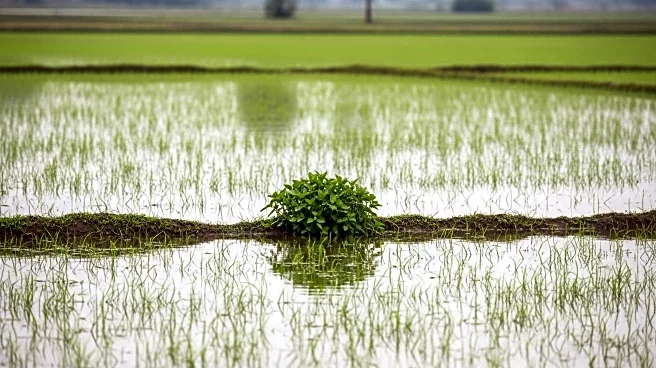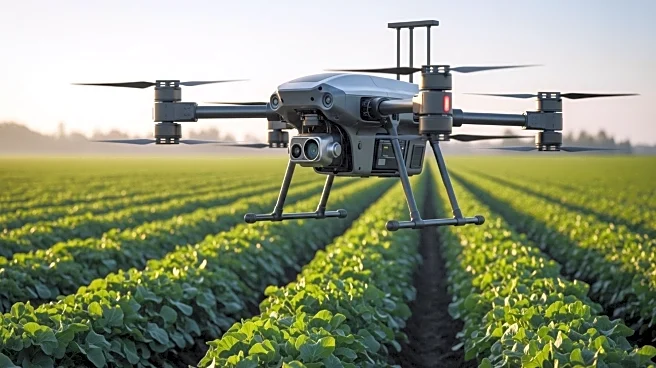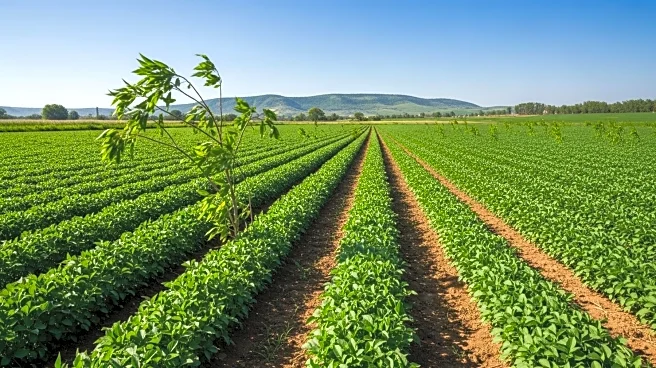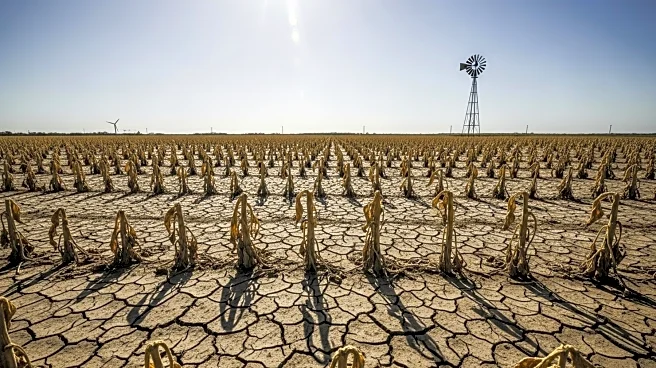What's Happening?
The Food and Agriculture Organisation (FAO) has issued a warning regarding the impact of recent floods in Punjab and Khyber-Pakhtunkhwa on upcoming Rabi cultivation. The floods have inundated 1.3 million hectares, including 0.93 million hectares of cropland, with Punjab being the worst affected. The FAO's preliminary assessment report highlights threats to seed availability for Rabi 2025-26 and Kharif 2026, as much of the saved grain used for wheat seed was lost in flooded areas. Additionally, the floods have led to fodder shortages, increased disease risks, and distress sales among livestock owners. The FAO has also noted favorable conditions for outbreaks of diseases such as lumpy skin disease and foot-and-mouth disease. The Punjab Provincial Disaster Management Authority has directed survey teams to prioritize public complaints while assessing losses in affected areas.
Why It's Important?
The floods in Punjab and Khyber-Pakhtunkhwa pose significant challenges to agricultural productivity and food security in the region. The damage to cropland and the threat to seed availability could lead to reduced crop yields, affecting the livelihoods of farmers and the overall agricultural output. The increased risk of livestock diseases further exacerbates the situation, potentially leading to economic losses for farmers reliant on animal husbandry. The FAO's warning underscores the need for immediate and effective disaster management strategies to mitigate the impact on agriculture and ensure the availability of essential resources for upcoming cultivation seasons.
What's Next?
The Punjab Provincial Disaster Management Authority is focusing on addressing public complaints and conducting thorough assessments of flood-damaged areas. Efforts to restore agricultural infrastructure and support affected farmers will be crucial in the coming months. Additionally, the Pakistan Meteorological Department has forecasted rain, wind, and thunderstorms in southeastern Sindh until October 2, which could further complicate recovery efforts. Stakeholders, including government agencies and agricultural organizations, will need to collaborate to provide relief and support to affected communities, ensuring the stability of the agricultural sector.
Beyond the Headlines
The floods highlight the vulnerability of agricultural systems to climate-related disasters and the importance of building resilience in farming practices. Long-term strategies may include investing in flood-resistant infrastructure, improving seed storage facilities, and enhancing disease surveillance systems to protect livestock. The situation also calls for a reevaluation of disaster preparedness and response mechanisms to better support rural communities in times of crisis.










